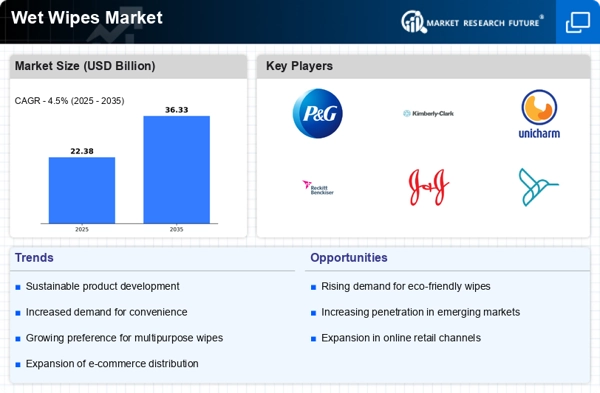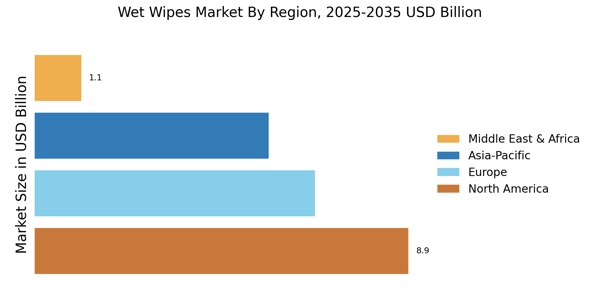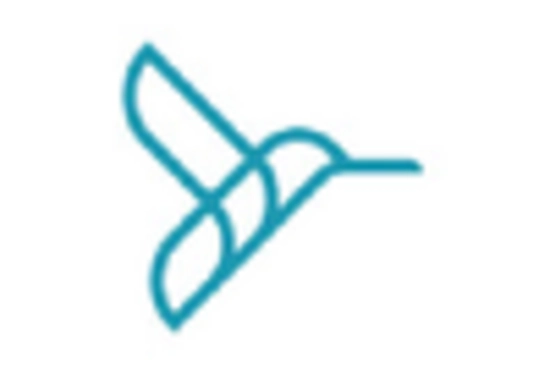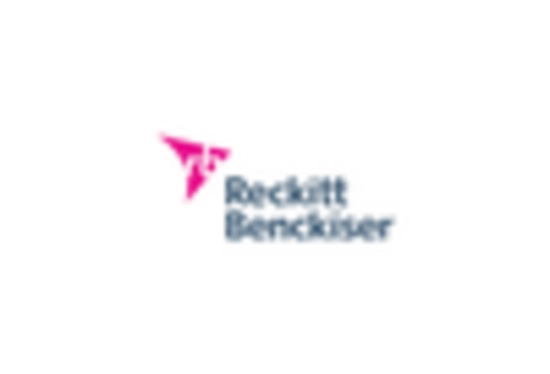The Wet Wipes Market is currently characterized by a dynamic competitive landscape, driven by increasing consumer demand for convenience and hygiene products. Major players such as Procter & Gamble (US), Kimberly-Clark (US), and Reckitt Benckiser (GB) are strategically positioned to leverage innovation and sustainability in their product offerings. Procter & Gamble (US) focuses on enhancing its product portfolio through eco-friendly materials, while Kimberly-Clark (US) emphasizes digital transformation to optimize its supply chain and improve customer engagement. Reckitt Benckiser (GB) is actively pursuing partnerships to expand its market reach, particularly in emerging economies, thereby shaping a competitive environment that prioritizes sustainability and consumer-centric solutions.
Key business tactics within the Wet Wipes Market include localizing manufacturing and optimizing supply chains to enhance efficiency and reduce costs. The market appears moderately fragmented, with a mix of established players and emerging brands vying for market share. The collective influence of these key players fosters a competitive structure that encourages innovation and responsiveness to consumer preferences, ultimately driving growth in the sector.
In August 2025, Procter & Gamble (US) announced the launch of a new line of biodegradable wet wipes, reflecting its commitment to sustainability. This strategic move not only aligns with growing consumer preferences for environmentally friendly products but also positions the company as a leader in sustainable innovation within the market. The introduction of these wipes is likely to enhance brand loyalty and attract environmentally conscious consumers.
In September 2025, Kimberly-Clark (US) unveiled a new digital platform aimed at streamlining its supply chain operations. This initiative is expected to improve operational efficiency and reduce lead times, thereby enhancing customer satisfaction. By investing in digital transformation, Kimberly-Clark (US) demonstrates its commitment to leveraging technology to maintain a competitive edge in the Wet Wipes Market.
In July 2025, Reckitt Benckiser (GB) entered into a strategic partnership with a leading e-commerce platform to expand its distribution channels for wet wipes. This collaboration is anticipated to enhance product accessibility and visibility, particularly in regions with growing online shopping trends. Such strategic alliances are crucial for adapting to changing consumer behaviors and ensuring sustained market presence.
As of October 2025, current competitive trends in the Wet Wipes Market are increasingly defined by digitalization, sustainability, and the integration of artificial intelligence in product development and marketing strategies. Strategic alliances are shaping the landscape, enabling companies to pool resources and expertise to address evolving consumer demands. Looking ahead, competitive differentiation is likely to shift from price-based competition to a focus on innovation, technology, and supply chain reliability, as companies strive to meet the expectations of a more discerning consumer base.


















Leave a Comment